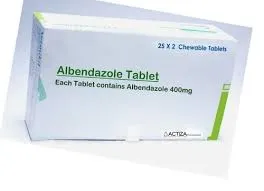- Afrikaans
- Albanian
- Amharic
- Arabic
- Armenian
- Azerbaijani
- Basque
- Belarusian
- Bengali
- Bosnian
- Bulgarian
- Catalan
- Cebuano
- Corsican
- Croatian
- Czech
- Danish
- Dutch
- English
- Esperanto
- Estonian
- Finnish
- French
- Frisian
- Galician
- Georgian
- German
- Greek
- Gujarati
- Haitian Creole
- hausa
- hawaiian
- Hebrew
- Hindi
- Miao
- Hungarian
- Icelandic
- igbo
- Indonesian
- irish
- Italian
- Japanese
- Javanese
- Kannada
- kazakh
- Khmer
- Rwandese
- Korean
- Kurdish
- Kyrgyz
- Lao
- Latin
- Latvian
- Lithuanian
- Luxembourgish
- Macedonian
- Malgashi
- Malay
- Malayalam
- Maltese
- Maori
- Marathi
- Mongolian
- Myanmar
- Nepali
- Norwegian
- Norwegian
- Occitan
- Pashto
- Persian
- Polish
- Portuguese
- Punjabi
- Romanian
- Russian
- Samoan
- Scottish Gaelic
- Serbian
- Sesotho
- Shona
- Sindhi
- Sinhala
- Slovak
- Slovenian
- Somali
- Spanish
- Sundanese
- Swahili
- Swedish
- Tagalog
- Tajik
- Tamil
- Tatar
- Telugu
- Thai
- Turkish
- Turkmen
- Ukrainian
- Urdu
- Uighur
- Uzbek
- Vietnamese
- Welsh
- Bantu
- Yiddish
- Yoruba
- Zulu
10 月 . 21, 2024 11:41 Back to list
enrofloxacin injection
Enrofloxacin Injection A Comprehensive Overview
Enrofloxacin is a synthetic fluoroquinolone antibiotic that is widely used in veterinary medicine for the treatment of various bacterial infections in animals. It is particularly effective against Gram-negative and some Gram-positive bacteria, making it a versatile choice for veterinarians dealing with infections in pets and livestock.
One of the primary benefits of enrofloxacin injection is its broad-spectrum activity
. It is commonly used in dogs, cats, cattle, and swine to combat infections caused by pathogens such as Escherichia coli, Salmonella, Staphylococcus, and Streptococcus species. Additionally, enrofloxacin is often chosen for cases where other antibiotics may not be effective, due to its unique mechanism of action.Enrofloxacin works by inhibiting bacterial DNA gyrase and topoisomerase IV, which are essential enzymes for bacterial DNA replication and transcription. This interference ultimately leads to the death of the bacteria, making enrofloxacin a highly potent antibiotic for treating active infections. It is generally administered via injection, allowing for rapid absorption and distribution throughout the body, which is especially beneficial in critical cases.
The dosage and administration of enrofloxacin injection vary depending on the species being treated and the severity of the infection. In veterinary practice, it is essential to follow the guidelines provided by the manufacturer or established veterinary protocols to ensure the appropriate use of this antibiotic. Misuse or overuse of enrofloxacin can lead to antibiotic resistance, which is a growing concern in both human and veterinary medicine.
enrofloxacin injection

Enrofloxacin is not without its side effects. Some animals may experience adverse reactions such as gastrointestinal upset, including vomiting and diarrhea. In rare cases, it may cause more serious side effects like central nervous system disturbances or joint problems, particularly in growing animals. Therefore, it is crucial for veterinarians to weigh the risks and benefits of enrofloxacin therapy when considering its use for a specific patient.
Another important consideration is the withdrawal time for enrofloxacin in food-producing animals. According to regulatory guidelines, there is a specified period during which the treated animals should not be slaughtered for food consumption after receiving enrofloxacin. This is to ensure that drug residues do not enter the food supply, safeguarding public health. Veterinarians must educate animal owners about these regulations to prevent violations.
Lastly, with the growing concern over antibiotic resistance, veterinary practitioners are encouraged to employ enrofloxacin judiciously. This includes performing culture and sensitivity tests to determine the causative bacteria and their susceptibility to antibiotics. By using enrofloxacin only when necessary and in conjunction with other treatment strategies, veterinarians can help combat the rise of antibiotic-resistant infections.
In conclusion, enrofloxacin injection is a valuable tool in veterinary medicine, showcasing its effectiveness against a wide range of bacterial infections. While it offers significant benefits, proper usage and awareness of potential risks are essential. With careful management and adherence to guidelines, enrofloxacin can continue to play a crucial role in maintaining animal health and welfare.
-
The Power of Radix Isatidis Extract for Your Health and Wellness
NewsOct.29,2024
-
Neomycin Sulfate Soluble Powder: A Versatile Solution for Pet Health
NewsOct.29,2024
-
Lincomycin Hydrochloride Soluble Powder – The Essential Solution
NewsOct.29,2024
-
Garamycin Gentamicin Sulfate for Effective Infection Control
NewsOct.29,2024
-
Doxycycline Hyclate Soluble Powder: Your Antibiotic Needs
NewsOct.29,2024
-
Tilmicosin Premix: The Ultimate Solution for Poultry Health
NewsOct.29,2024













